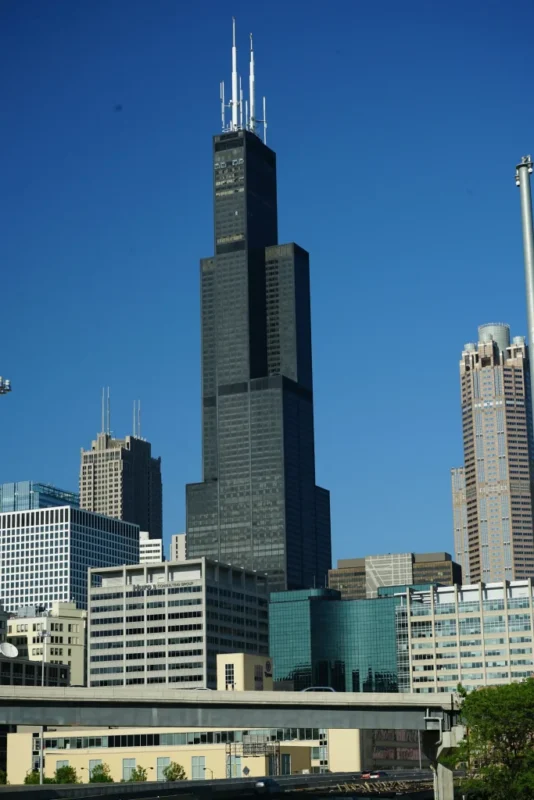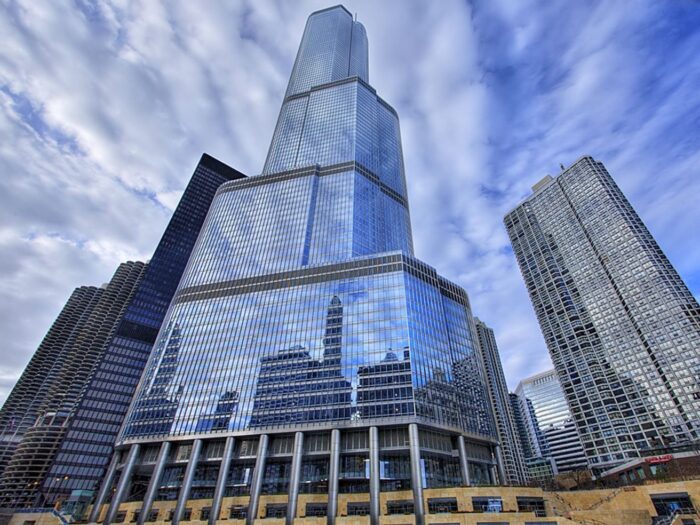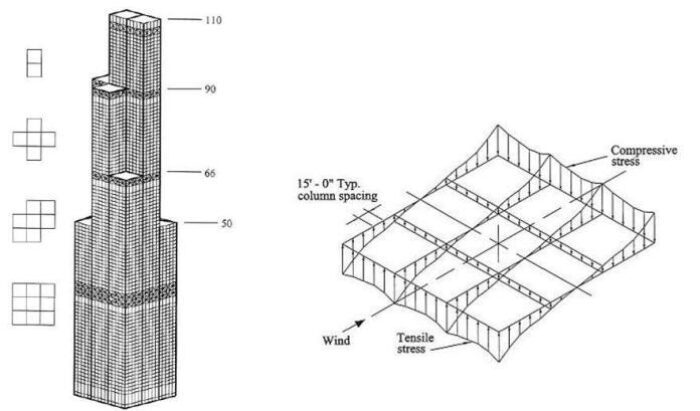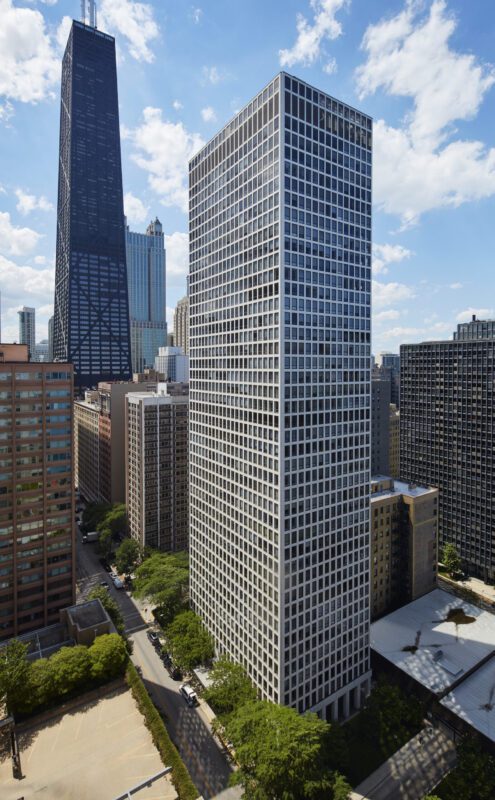Chicago’s Architectural Giants: A Complete Guide to the City’s 10 Tallest Buildings

Chicago’s skyline tells the story of American architectural ambition, where each towering structure represents a carefully curated moment in the evolution of vertical design. Like examining prized artifacts in a world-class collection, these ten architectural giants deserve recognition not merely for their height, but for their contributions to the discipline’s ongoing narrative. The future towers that will transform Chicago’s skyline promise to add new chapters to this vertical anthology, while the city’s current champions continue to hold court alongside the world’s tallest skyscrapers and rival collections in cities like London and Seattle.
What is the Tallest Building in Chicago?
When people ask about Chicago’s tallest building, the answer remains unchanged since 1974. The Willis Tower (formerly Sears Tower) stands as Chicago’s undisputed champion at 1,451 feet with 110 stories. This architectural marvel proves that great design ages like fine wine.
The Willis Tower owes its dominance to Fazlur Rahman Khan’s revolutionary bundled tube structural system. This 1974 masterwork by Skidmore, Owings & Merrill actually predicted today’s sustainable design principles through its efficient structural logic. Most people miss this connection when they celebrate newer “green” towers.
The Architectural DNA of Chicago’s Tallest Building
Standing 110 stories tall, the Willis Tower’s black aluminum and bronze-tinted glass exterior has become the face of Chicago. But here’s what makes it special: the true genius lies in the structural innovation that made such unprecedented height possible with remarkable material efficiency. The building’s stepped profile wasn’t just for looks—it was a brilliant engineering solution that changed skyscraper design worldwide.
Why the Willis Tower Still Matters in Chicago Architecture
The bundled tube system revolutionized how architects think about building height. Before this innovation, Chicago building heights were limited by traditional structural methods. The Willis Tower proved that Chicago skyscrapers could reach new heights while using materials efficiently. This breakthrough influenced supertall buildings across the globe.
How Tall is the Willis Tower in Chicago?
Getting the exact numbers right matters when discussing Chicago’s tallest buildings. The Willis Tower measures exactly 1,451 feet with 108 floors, completed by Skidmore, Owings & Merrill in 1974. You’ll find different floor counts in various sources—a reminder that documentation standards for supertall buildings have evolved significantly since the 1970s.
The Sears Tower Height Revolution
The Sears Tower height achievement didn’t happen overnight. When construction began, no one knew if the bundled tube system would work at this scale. The engineers took a calculated risk that paid off spectacularly. Today, the Skydeck attracts approximately 1.3 million visitors annually who enjoy views of up to 50 miles and four states, transforming the building from corporate headquarters into cultural landmark.
Measuring Chicago’s Architectural History
The Willis Tower’s precise measurements tell a story about architectural history. At 1,451 feet, it held the title of America’s tallest building for 39 years. The building height represents more than just numbers—it marks Chicago’s place in the evolution of vertical construction and structural engineering.
Trump International Hotel & Tower: The Silver Medalist
The second-tallest building in Chicago deserves serious attention. At 1,388 feet including its spire, with 100 stories reaching a roof height of 1,169 feet, Adrian Smith’s 2009 design for the Trump Tower shows how modern skyscraper design has shifted toward mixed-use programming.
Chicago Loop’s Newest Architecture Giants
The Trump Tower’s crystalline form steps back as it rises, creating a conversation with the Willis Tower while asserting its own architectural personality along the Chicago River. This positioning wasn’t accidental—it represents strategic urban planning next to the main branch of the Chicago River, with a view of the entry to Lake Michigan beyond a series of bridges.
Modern Chicago Skyscrapers and River Views
This siting connects the tower to Chicago’s broader infrastructural story, from Daniel Burnham’s lakefront vision to today’s riverfront revitalization. The Trump Tower proves that Chicago tallest buildings can honor the past while embracing contemporary design principles. The mixed-use programming reflects how Chicago architecture has evolved beyond pure office towers.
St Regis Chicago: The Contemporary Contender
The ranking of Chicago’s tallest buildings includes some impressive newcomers. The second, third, and fourth-tallest buildings in Chicago are the Trump International Hotel & Tower, St Regis Chicago, and the Aon Center, respectively. Each represents different eras of Chicago’s architectural evolution.
The Latest Chapter in Chicago Building Heights
The St Regis represents the newest chapter in Chicago’s supertall evolution. This tower embodies contemporary luxury residential design trends that prioritize experiential amenities over pure office efficiency. The building shows how Chicago skyscrapers have adapted to changing market demands while maintaining the city’s architectural standards.
Residential Towers in Chicago’s Skyline
Unlike the office-focused towers of previous decades, the St Regis demonstrates how Chicago tallest buildings now serve multiple functions. The residential focus reflects changing urban living patterns and the demand for luxury housing in the Chicago Loop. This shift marks a significant evolution in Chicago architecture.
Aon Center: Modernist Monumentality
The Aon Center reaches 1,136 feet, representing Edward Durell Stone’s late-career exploration of corporate modernism. This building tells a fascinating story about material choices and their impact on architectural identity.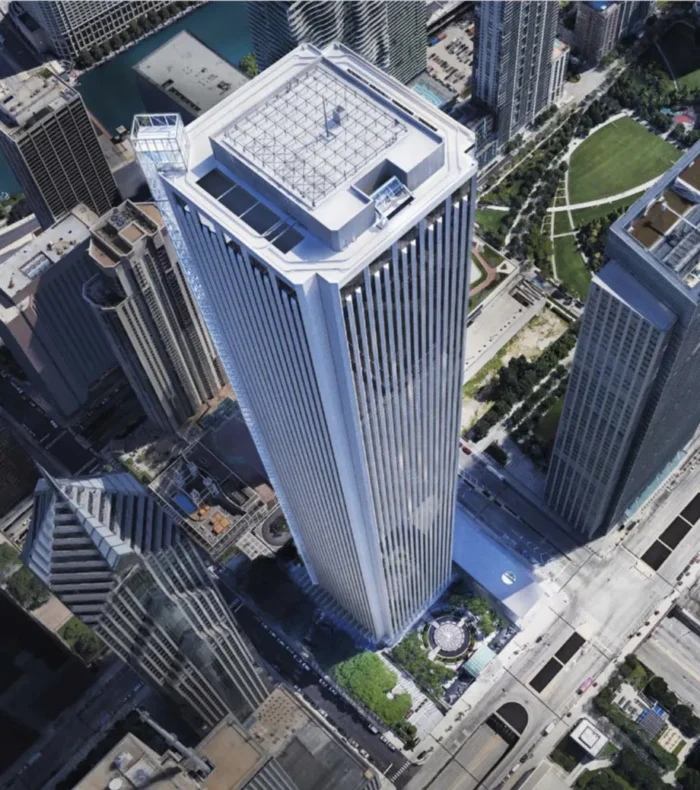
Material Choices in Chicago Architecture
Originally clad in Carrara marble before its controversial re-cladding in granite, the Aon Center embodies the tensions between architectural idealism and practical building performance. This material change fundamentally altered the building’s character and urban presence. The story serves as a case study in how surface treatments can make or break a building’s legacy.
Corporate Modernism in the Chicago Loop
The Aon Center represents a specific moment in Chicago’s architectural history when corporate modernism dominated the skyline. The building’s clean lines and monolithic presence reflect the design philosophy of its era. Stone’s design approach influenced other Chicago skyscrapers of the period, contributing to the city’s distinctive architectural character.
Engineering Marvels: The Structural Innovations Behind Chicago’s Tallest Buildings
Chicago’s tallest buildings function as a laboratory for structural innovation. The engineering breakthroughs developed here have influenced tower design worldwide. These buildings represent more than architectural achievements—they’re testaments to human ingenuity in structural engineering.
The Bundled Tube System Revolution
The Willis Tower’s bundled tube system directly influenced the design of subsequent supertall buildings worldwide. This structural innovation allowed architects to reach unprecedented heights while maintaining stability and efficiency. The system’s success proved that Chicago could lead the world in structural engineering innovation.
Concrete vs. Steel in Chicago Skyscrapers
311 South Wacker Drive, completed in 1990, was once the tallest reinforced concrete building in the world before being surpassed by Dubai’s Burj Khalifa. This achievement demonstrates Chicago’s continuing role as a testing ground for vertical construction techniques. The building proves that different materials can achieve similar heights through innovative engineering.
1980s Building Boom and Structural Approaches
The Franklin Center and Two Prudential Plaza, reaching 1,007 feet and 995 feet respectively, represent different approaches to the 1980s building boom. During this period, developers pushed height limits while architects explored postmodern formal strategies. Comparing their structural systems reveals how engineering innovation often outpaces stylistic trends in Chicago architecture.
Why Was the Sears Tower Renamed Willis Tower?
The story behind the name change reveals broader trends in corporate real estate. The 2009 naming rights change from Sears Tower to Willis Tower reflects shifts in corporate real estate strategy and building ownership models.
Corporate Identity and Chicago’s Tallest Building
This transformation illustrates how architectural landmarks navigate identity changes while maintaining cultural significance. The Willis Tower name change represents a phenomenon increasingly common as historic corporate headquarters adapt to contemporary market conditions. Many Chicagoans still call it the Sears Tower, showing how architectural history persists despite official changes.
The Business of Naming Rights in Chicago Architecture
The naming rights deal reflects the modern reality of commercial real estate financing. Buildings that once bore the names of their original corporate tenants now carry the brands of their current major occupants. This shift shows how Chicago tallest buildings must adapt to changing economic conditions while maintaining their architectural integrity.
The New Generation: NEMA Chicago and One Chicago
Chicago’s newest tall buildings represent a different approach to urban living. These towers show how Chicago architecture continues to evolve while respecting the city’s architectural heritage.
NEMA Chicago: Rental Housing Reaches New Heights
NEMA Chicago is the tallest all-rental residential building in the city, boasting 800 apartments spread over 76 floors. Rafael Viñoly’s design pays homage to the Willis Tower through its sculptural cutaways, demonstrating how contemporary architects reference canonical works while addressing current housing demands. The building proves that Chicago building heights can serve residential needs as effectively as commercial ones.
One Chicago: Mixed-Use Innovation
One Chicago East Tower reaches 973 feet, representing the latest iteration in mixed-use tower design. Residential, retail, and hospitality programs integrate within a single vertical structure. These buildings signal Chicago’s evolution from a primarily commercial skyscraper city to a more diverse vertical ecosystem. The mixed-use approach reflects changing urban living patterns and economic demands.
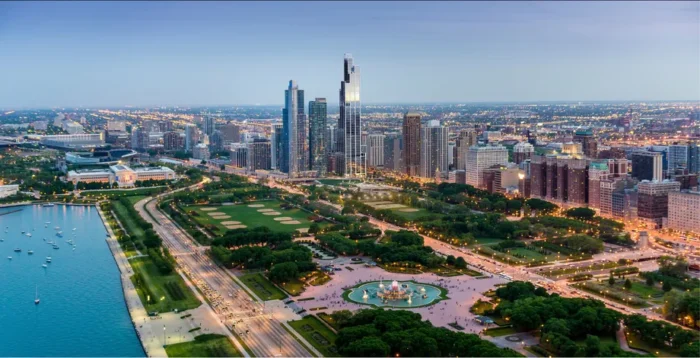
At 893 feet tall, NEMA will tower above its neighbors—One Museum Park (726 feet) and The Grant (594 feet)—to the east. Rendering by Steelblue, courtesy of Crescent Heights
The Future of Chicago Skyscrapers
These newer towers incorporate lessons learned from decades of Chicago architecture. They balance height with livability, efficiency with aesthetics, and innovation with respect for the city’s architectural heritage. The designs show how Chicago tallest buildings continue to set standards for urban development worldwide.
Is the Willis Tower Still the Tallest Building in Chicago?
Yes, the Willis Tower remains the tallest building in Chicago, though its global ranking has shifted dramatically since completion. The tower’s story reflects the changing landscape of international architecture and construction.
Global Competition and Chicago’s Position
The Willis Tower remained the tallest building in the United States until May 10, 2013, when One World Trade Center claimed that distinction. This evolution reflects the globalization of supertall construction and changing centers of architectural ambition. While Chicago may no longer dominate global height rankings, the city’s influence on structural engineering and design innovation remains unmatched.
The Tallest Building in Chicago Illinois: A Lasting Legacy
The Willis Tower’s status as the tallest building in Chicago Illinois represents more than just height—it symbolizes the city’s contribution to architectural history. The building’s bundled tube system, efficient design, and urban impact continue to influence how architects approach supertall buildings. The tower proves that great architecture transcends simple measurements.
Comparative Context: Chicago’s Place in Global Architecture
Chicago’s collection of towers, while impressive regionally, exists within a global context of increasing vertical density. The city’s architectural influence extends far beyond its current height rankings.
Chicago vs. Global Supertall Buildings
When compared to the tallest buildings worldwide, Chicago’s skyline reveals both the city’s historical significance in skyscraper development and the contemporary reality of international competition. Unlike emerging markets building primarily for symbolic purposes, Chicago’s towers represent organic urban growth responding to genuine density needs.
Architectural DNA and Global Influence
The city’s architectural DNA—visible in these architecture giants—continues influencing tower design globally. From structural innovations pioneered in the Willis Tower to mixed-use programming models refined in contemporary projects, Chicago’s influence extends beyond pure height achievements. The city’s approach to structural engineering and urban planning provides a model for sustainable vertical development.
Innovation Over Height: Chicago’s True Legacy
Chicago’s contribution to architectural history encompasses fundamental questions about urban living, workplace design, and architectural sustainability. The city’s focus on structural innovation and practical solutions offers lessons for architects worldwide. While other cities may build taller, Chicago’s emphasis on engineering excellence and urban integration provides a more sustainable model for future development.
Chicago’s tallest buildings function as both individual architectural achievements and collective urban artifacts, each earning its place through rigorous evaluation against historical precedent and future potential. They remind us that true architectural significance extends far beyond mere height, encompassing innovation, urban impact, and cultural resonance that transcends their immediate physical presence. As the city’s skyline continues evolving, these architecture giants provide the foundation for understanding how vertical architecture can simultaneously serve commercial needs, urban density requirements, and cultural aspirations. The story of Chicago architecture continues to unfold, with each new addition building upon the structural innovations and design principles established by these towering achievements.
The post Chicago’s Architectural Giants: A Complete Guide to the City’s 10 Tallest Buildings appeared first on Arch2O.com.

